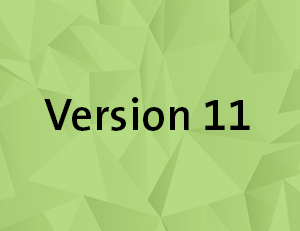Easy ways to boost your small business’s cash flow management
Every business, no matter how big or complex, must follow certain steps to be successful. One of the key steps in growing your small business involves managing cash flow by tracking and improving your finances.
Cash flow refers to the movement of incoming (profit) and outgoing (expenses) money that keeps your business running the way you want it.
What’s important to remember is that even profitable businesses can easily run into cash flow problems if they have expenses that are due before their receivables (profit) make their way into their bank accounts. Plus, even a small hitch in your cash flow can mean you may not be able to pay important expenses (such as your electricity bill, your car repayments or purchase additional inventory) which can lead to much larger problems down the line.
So, you’re probably wondering, if being profitable doesn’t stop me from potentially having cash flow problems as a small business, what does? Below, we will share some essential tips for managing cash flow in your business.
How to avoid small business cash flow problems:
Avoiding cash flow catastrophes as a small business can be the difference between gradual growth and dangerous debt. To improve your cash flow as a small business, it can be helpful to separate our goals into two key areas.
- Firstly, we want to reduce the time between you selling your goods or services, and the time that you get paid – this can be done by improving your invoicing, incentivising customers, increasing prices and better bookkeeping.
- Secondly, we want to reduce your expenses or, at the very least, better manage when those expenses need to be paid – this can be done by opening a business bank account, leasing instead of buying, and simple budgeting.
Smoothing out your small business’s profits and expenses is a sure-fire way to improve cash flow.
Read on for 7 perfect tips for any small business looking to improve its cash flow.
1. Consider opening a business bank account
Depending on the type of business you run, you may or may not be required to use a business bank account. Companies, trusts, and partnerships in Australia are required to have a business bank account for tax purposes,but sole traders aren’t legally required to have a separate business bank account. Sole traders can just use a personal bank account if they wish.
However, opening and operating a separate account for your business makes it easier to track your income and expenses. Transactions won’t get lost in your personal spending. Plus, some business bank accounts may even offer a cashback, which can be a nice bonus to help take the sting out of your expenses.
2. ‘Leasing’ isn’t always a bad word
I don’t know about you, but I was always taught that leasing instead of buying outright was a poor financial decision, as lease payments can end up costing you more. However, this isn’t always the case in business, particularly if you are trying to improve your cash flow.
While leasing equipment, supplies or property can be expensive, the small, regular instalment payments make it a much better option for keeping your cash flow healthy and predictable – saving your cash for when you really need it. Plus, lease payments for business expenses can be written off in your taxes!
3. Put your invoicing under a microscope
A great way to bolster your cash flow is to improve the way you invoice. The quicker you can get paid after providing your goods or services, the better your cash flow will be.
Make sure you are invoicing as soon as possible – there’s no point in waiting to invoice your customers. Then, start checking that you are making it as easy as possible for your clients to pay you as soon as they receive an invoice:
- Are your payment details clear?
- Do you offer digital payments?
- Are there straightforward payment dates?
- Is your invoice professional and prompt?
- Are you sending your invoice to the right person to get it paid quickly?
- Are you following up on customers that are not paying within the payment dates?
Another trick you can employ is to offer customers an incentive to pay their invoices early. A small discount in exchange for early payment can help you get paid quicker and keep your customers smiling – win, win!
4. Analyse your cash flow
A thorough cash flow analysis makes it easy for you to work out exactly how much cash you have on hand at any point in time.
It will also help you identify factors that may be preventing you from improving your cash flow, such as where you are overspending.
By merging all your cash flow information and storing it in one place (rather than have it spread over multiple documents, folders, and software. Or, if you’re like some people, on your kitchen table), you can have a thorough understanding of the amount of money coming in and out, as well as the dates of upcoming cash expenditures, so you know exactly when you have to pay something and won’t get caught out with overdue fees.
Just knowing how to get a handle on expected income and upcoming bills can alleviate some of the anxiety that comes with running a business.
If you’re a sole trader, check out our guide on how to get your cash flow analysis up and running quickly.
‘Revenue is vanity, profit is sanity, but cash is king,’ Unknown.
Start by mapping your bank statements as well as compiling a list of your customer payments, service fees, interest earnings and other sources of income. Next, create a list of your expenses, including materials and supplies, machinery, stock, salaries and wages, taxes, rent, office supplies and all overhead costs.
5. Prepare a budget
If you are a new business and are unsure how much money you are likely to spend or make, you can prepare a budget to help you better manage cash flow.
A cash flow budget is a document that outlines your estimated income and expenses for any length of time. This will help you project and anticipate obvious problems and guide your spending for that set period and you can make informed decisions that can fall back on some data. Here is our guide on creating a cash flow budget.
Budgeting can be quite a tricky (and often boring) skill to master but it’s one of those areas that pays off in small businesses. We even recommend making multiple budgets that outline varying scenarios, so you can be prepared for all situations.
It’s also quite important to keep making tweaks to your budget throughout the year, so you get an accurate overview and realistic spending pattern.
The more accurate you can be, the better because according to the executive director of the Council of Small Businesses of Australia Peter Strong, “Businesses tend to either overestimate or underestimate.”
6. Save, save, save 
While stockpiling cash reserves isn’t an option for every business (particularly start-ups and new small businesses that are investing in themselves to stay afloat), it is a safe way to protect your business from a cash flow crisis.
We all know that the world is an unpredictable place and, despite all the planning and budgeting you do, there’s always a chance that things can start to go belly-up. Putting away some cash in a savings account may not earn you extra profits – but it does help to protect you, and your business, from the twists and turns of the wider economy (remember that a global pandemic?).
7. Get into the flow of bookkeeping
Most people don’t start a small business to spend hours managing their books, but regularly updating your bookkeeping is vital to your cash flow and the success of your business. Accounting and bookkeeping aren’t things you can simply ignore. Make them part of your daily or weekly routine to avoid future headaches
With your accounting and your reporting kept up to date, you will be able to quickly get a snapshot of your small business – leading to better business decisions and less unpleasant cash flow surprises.
Thankfully, there are several simple and easy-to-learn electronic bookkeeping software products available that simplify the process of recording transactions, updating ledgers, calculating GST, generating invoices, and preparing financial statements.
You can ask your accountant or advisor for their recommendations and remember to choose a software that complies with Standard Business Reporting.
Good bookkeeping software is key and is reliable for:
- Creating financial reports that tell you how much your business is worth at a specific point in time and how much monthly profit you’re making.
- Keeping receipts and payment records of every expenditure by your business.
- Collecting the financial information you need to file various tax returns, BAS and other required reporting.
- Summarising your income and expenses on a periodic basis.
Key Takeaway: What are the best ways to improve your cash flow management?
Every small business can improve their cash flow management by invoicing faster, utilising a business bank account, investigating whether leasing is a good option, bookkeeping regularly, analysing their cash flow, preparing a cash flow budget, and saving some money in case of emergency.
In addition to the tips above, we suggest that you always implement careful monetary calculations and risk management strategies. This will help you keep your business running smoothly and avoid any cash flow problems that could snowball out of control.
If you own a small business, using simple bookkeeping software is a reliable way to track your financial commitments and help keep you compliant. It is important that you plan carefully whilst monitoring your cash flow for your business to run smoothly.
Start managing your cash flow the right way, right now with Cashflow Manager.













Leave a Reply